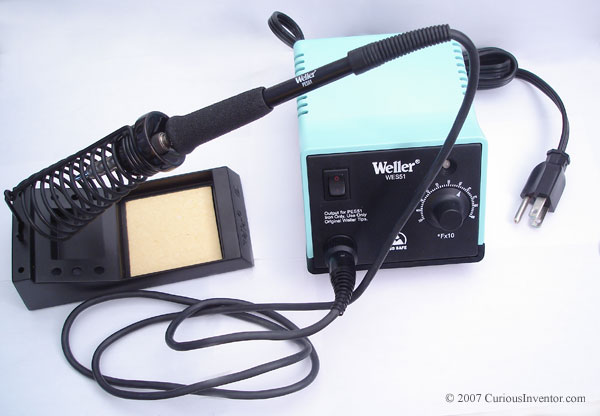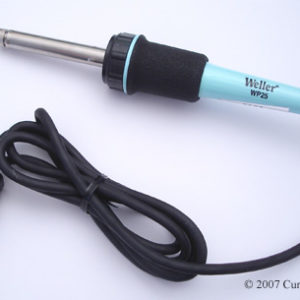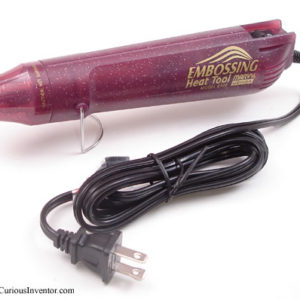Description
If you’re looking to move up to a temperature controlled soldering station, we think it’s well worth the money to get this (or something of similar caliber) over a $50-$60 station. This station will last many years, and most cheaper stations (RadioShack���, for example) don’t have the tip selection, aren’t as comfortable to hold and have handles that get too hot.

Complete specs and features:
- comes with everything shown: iron, station, stand and sponge
- silicone rubber, burn resistant cord
- comes with ETA tip: 1/16″ screwdriver shape with heavy iron, nickel and chromium plating for long life
- tip temperature: resolution 10 deg F, stability: +-10 deg F, can be offset +-9 deg F, 10 seconds to recover 100 degrees with ETA tip at 700 degrees F
- tool: lightweight, 2 oz. without cord, wrapped in heat insulating foam for low grip temperature and comfort
- auto shut off after 99 minutes of inactivity
- tip is grounded, zero power switching, < 2mV TRMS to ground, tool and station are made from static dissipative materials.
- Station temperature can be locked so operators don’t can’t exceed process temperatures.
- 110-120VAC
- a K-type thermocouple fits deep inside tip for fast response from a ceramic heater
- the tip comes tinned with lead-free solder

What temperature should I use? The usual recommended ranges are 600-700 degrees F for lead-based solder, and 700-800 degrees F for lead-free solder. In general, you should use the lowest temperature that allows you to complete a joint in a few seconds. Lower temperatures reduce risk of heat damage to the board and component. Also, exposing joints to high temperatures for unnecessarily long times will lead to a more brittle joint. On the other hand, while it’s good to use the lowest temperature possible, this doesn’t mean soldering at 400 degrees F is always a good idea. You also want to expose as little of the surrounding board and components as possible to elevated temperatures. An iron set at 400 degrees would take so long to heat a joint up to 370 deg F (approx. solder melting point) that a good portion of the surrounding board would also reach that temperature. A hotter iron temperature could sufficiently heat the joint without giving the heat time to spread out. So, there is a trade off: too hot, and there is risk of burning the target component, too cold and surround areas will receive unnecessary heat. Start at the low 600’s and only increase temperature if a joint is taking more than a few seconds to finish. Lead-free joints may take up to 5-7 seconds to complete. A temperature controlled station has the advantage of being able to deliver full heat at low temperatures, whereas typical hand-held irons can only supply more heat with higher temperatures.




Reviews
There are no reviews yet.